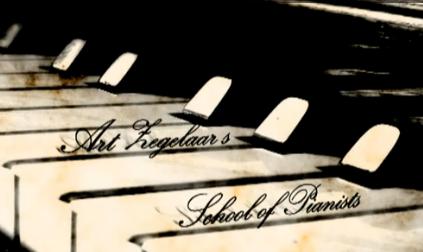'AT HOME EVERYTHING GOES SO WELL'
Every teacher is familiar with the announcement of the student:
"At home it went so very well".
 Apart from the fact that there is really no need for the student to proof anything during a lesson, and that a lesson is also there to set good practise standards and for that reason is practise, I recently ran into a very good explanation of this experience.
Apart from the fact that there is really no need for the student to proof anything during a lesson, and that a lesson is also there to set good practise standards and for that reason is practise, I recently ran into a very good explanation of this experience.
Researchers at a University discovered that people tend to forget what they are doing, when they walk into a different room. Entering a different room, the brain seems to allocate and address a different and new part of the brain and for that reason we often forget what we were doing or leaving the previous room for. And hence we have to rethink what was the reason for going into a different room.
Our brain hence, is very much at ease in our practise room at home, and we can reconstruct the things we were practising with ease, but going into the lesson room our brain has to adjust and we have to 'retrain' to some extent what we have practised.
It is therefore a good idea to start the lesson with a practise attitude in mind and less so a performance attitude. Gradually make yourselves comfortable in your lesson environment and you will more easily remember and focus on what you have learned when you were practising during the week.
It is for this reason also a good idea whenever you have a performance to have a rehearsal session in the room, on the stage where you will be performing.
Every teacher is familiar with the announcement of the student:
"At home it went so very well".
 Apart from the fact that there is really no need for the student to proof anything during a lesson, and that a lesson is also there to set good practise standards and for that reason is practise, I recently ran into a very good explanation of this experience.
Apart from the fact that there is really no need for the student to proof anything during a lesson, and that a lesson is also there to set good practise standards and for that reason is practise, I recently ran into a very good explanation of this experience. Researchers at a University discovered that people tend to forget what they are doing, when they walk into a different room. Entering a different room, the brain seems to allocate and address a different and new part of the brain and for that reason we often forget what we were doing or leaving the previous room for. And hence we have to rethink what was the reason for going into a different room.
Our brain hence, is very much at ease in our practise room at home, and we can reconstruct the things we were practising with ease, but going into the lesson room our brain has to adjust and we have to 'retrain' to some extent what we have practised.
It is therefore a good idea to start the lesson with a practise attitude in mind and less so a performance attitude. Gradually make yourselves comfortable in your lesson environment and you will more easily remember and focus on what you have learned when you were practising during the week.
It is for this reason also a good idea whenever you have a performance to have a rehearsal session in the room, on the stage where you will be performing.
When a couple of years ago the students of a primary school were having a show in the local town hall in the evening, there was one little boy, who in the afternoon walked into the hall, soaked up the atmosphere of the room and got used to the idea that he would be playing there that evening. It was this boy who that evening performed with the most confidence and won the first prize that evening...






















